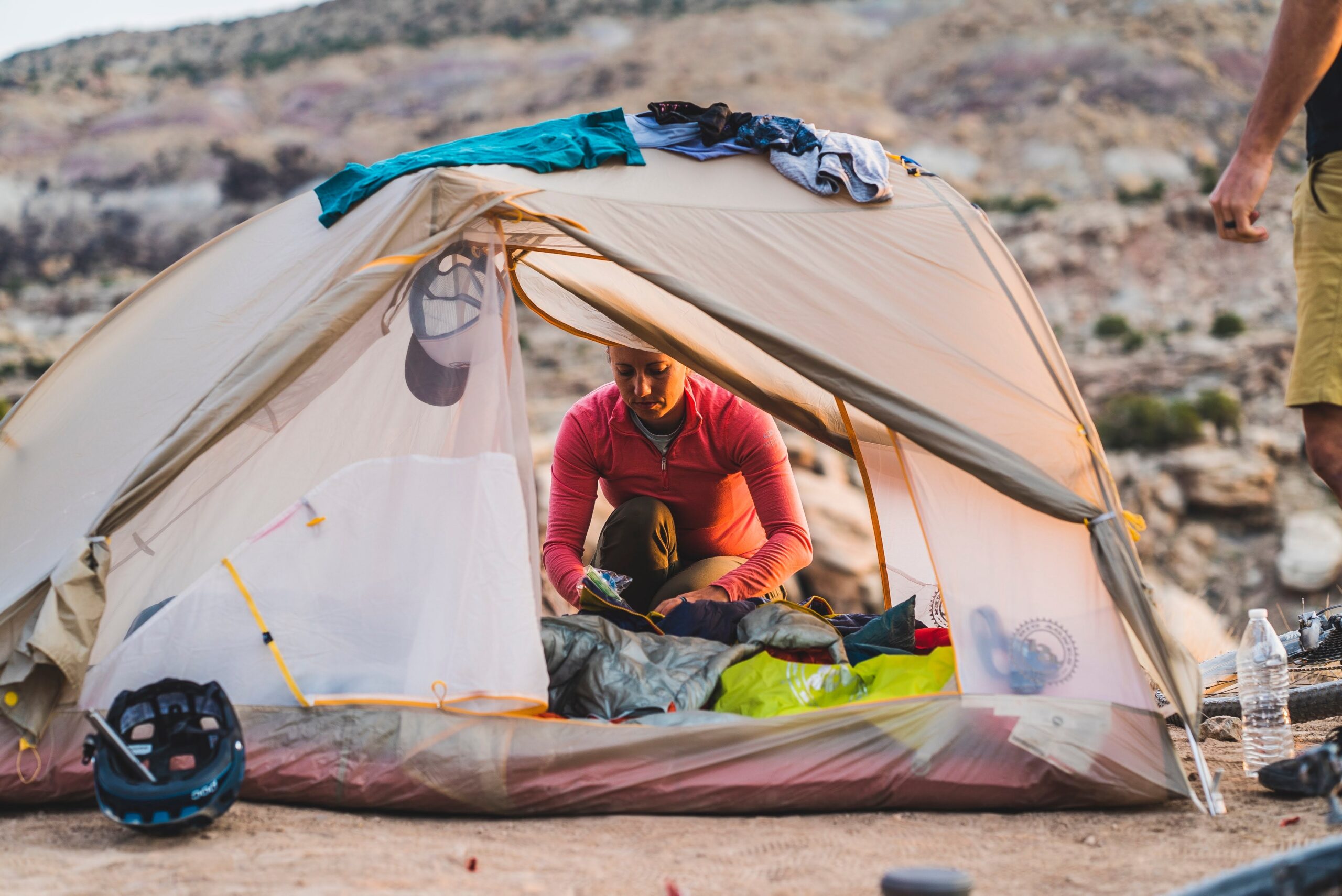A preoccupation with sustainability is nothing new for Big Agnes, which was founded in 2000 by Bill Gamber. In 2008, the Steamboat Springs, Colorado company introduced some products that were radically green at the time: the Skinny Fish and Ripple Creek sleeping bags and the Salt Creek two-person tent—all made from 100 percent recycled materials. The Salt Creek was also dye-free—unheard of for a tent—resulted in a shocking white color.
“We tested the Salt Creek on a very wet and muddy 8-day trip in Wales,” recalled Kristin Hostetter, then-gear editor at Backpacker and current editor-in-chief of �����ԹϺ��� Business Journal. “It wasn’t the most practical color and it was pretty grimy at the end of that trip. But we did appreciate the nice, bright ambiance created inside in that dreary Welsh weather. We ended up calling it the “happy tent.”
“Those products didn’t exactly fly off the shelves back then,” said Big Agnes co-owner, Len Zanni. But he and Gamber feel they were simply ahead of their time and that today’s consumers are ready for—in fact they are demanding— radical sustainability. “It’s clearly time we do what we can to reduce our impact and focus on climate change,” said Zanni.
That’s why, as Big Agnes celebrates its 20th anniversary, the company will be promoting its sustainability efforts more widely. And the 2021 product line makes some significant steps.
- There are nine new tents made with solution-dyed fly and body fabrics, which means that the fabrics are made from pre-colored chips of nylon or polyester versus fabric made from uncolored yarn that needs to be dyed. “Imagine a carrot versus a radish,” says Zanni. “One is colored throughout and one is only colored on the outside.” This reduces chemical use by 80 percent and eliminates nearly 5 gallons of water waste per tent, and lowers energy consumption by 80 percent during production. Better yet, the solution-dyed fabric is more UV resistant and colorfast, and less fabric is wasted since there are no challenges with color inconsistency found in a typical dyeing process.
- There’s also the TwisterCane BioFoam pad line, made from sugarcane in a process that actually removes carbon from the atmosphere. The pad is made from more than 60 percent sugarcane resin, a renewable raw material, and the supplier grows and harvests the cane via a net carbon-negative process.
- More than 60 percent of Big Agnes synthetic sleeping bags are made with between 50 and 100 percent post-consumer recycled insulation. All of BA’s down sleeping bags contain RDS certified, trackable down, and the DownTek water repellent system uses PFC-Free, bluesign-approved chemistry.
What’s next for Big Agnes in sustainability?
The Big Agnes Skinny Fish Sustainability Committee, so named after that award-winning sleeping bag, has other big plans for the near future. Formed after the company participated in the Higg Index Brand Module pilot program through OIA’s Climate Action Corps, the 16-person, cross-department, team has been identifying ways to source sustainable raw materials, reduce their carbon footprint at their home offices, and eliminate single-use plastics from packaging materials.
“The task ahead feels daunting but we’re taking a practical approach and doing what we can to reduce our impacts each year.” said Zanni.


